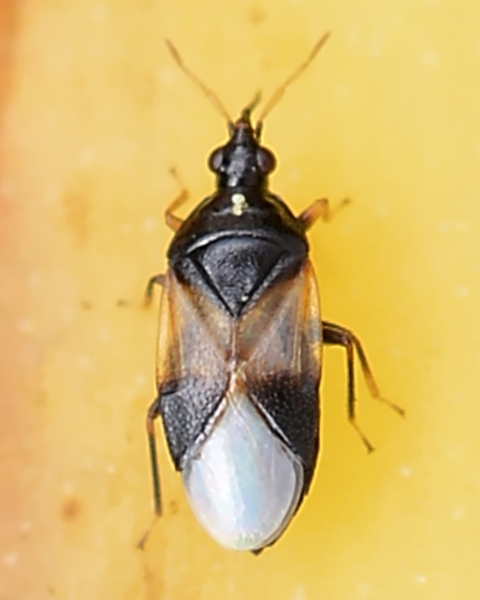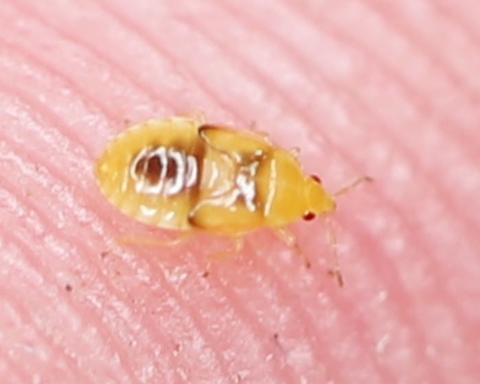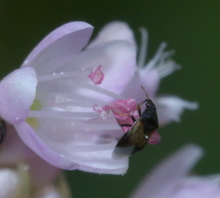Quick facts
- Minute pirate bugs are small insects that prey on many small pest insects.
- They are often found around flowers.
- During the fall, minute pirate bugs sometimes bite people. These bites may be irritating but have no medium or long term effects.
How to tell minute pirate bug from other insects
Minute pirate bug has three life stages, all of which are small (less than 1/5 inches). Both the immature and adult stages feed on other insects.
- These bugs are tiny (0.2 inches), oval-shaped, and black or black and white.
- They are most often found on or near flowers, or on plants with an infestation of other insects.
- Adults lay eggs, and eggs hatch and become adults over the course of 3 weeks.
- Immature minute pirate bugs are small, yellow and do not have wings.
Immature bugs can look similar to aphids or bed bugs. Making close observations in the area you found the bug can help you tell them apart.
Biology
- Adult minute pirate bugs spend the winter in dead leaves, bark, trees, buildings and other protected areas.
- There are many generations per year. It is possible to find any age of minute pirate bug at any point in the summer.
- In the fall, as flowers and pest insects die, minute pirate bugs sometimes bite people.
Benefits
Minute pirate bugs are predators, feeding on soft-bodied insects.
- Minute pirate bugs have a straw-like mouth part that they use to spear other insects.
- They feed on mites, thrips, aphids and other small insects.
Promoting minute pirate bug in your yard or farm
Minute pirate bugs like many of the same things that lady beetles and native bees like.
- Have consistently flowering plants in your garden. Minute pirate bugs feed on small insects commonly found in flowers and will feed on pollen or nectar if no prey is available.
- Allow some amount of aphids to be on plants.
- Limit pesticide applications. Many insecticides are not selective, meaning they will kill both pests, beneficial insects, and other insects.
-
While minute pirate bugs are available for purchase from some websites and catalogs, it is not effective or practical to release them outside. They can be a good biocontrol agent in some greenhouse situations.
Minute pirate bug as a nuisance pest
As prey insects populations drop and flowers dry up in the fall, minute pirate bugs look for new food sources. This sometimes leads to them jabbing humans, which can cause an irritating bite. Minute pirate bugs do not spread disease and the bites are a minor irritation.
- Insect repellents often have no effect on them and pesticide sprays on houses or in yards aren’t practical.
- If trying to avoid bites, take advantage of the fact that these bugs don’t like the cold. Focus on outdoor work on cool cloudy days.
- If you are concerned about a bite, consult your doctor or another trained medical professional.
Cranshaw, W. and Shetlar, D. J. (2018). Garden Insects of North America: The Ultimate Guide to Backyard Bugs. Princeton University Press.
University of California. Minute pirate bugs. Natural Enemies Gallery. https://www2.ipm.ucanr.edu/natural-enemies/minute-pirate-bugs/
Reviewed in 2022





